The Ultimate Guide To types of ice cream packaging (2023)
- By YANXIYAN
- August 24, 2023
Ready to dive into the sweet world of ice cream packaging?
Today, In this guide, I will talk about the various types of ice cream packaging that you’ll find in 2023.
Be it eco-friendly materials or innovative designs that maintain your treat’s optimal freshness, our journey is set to be as enticing as the flavors they safeguard.
So, let’s discover the best types of ice cream packaging options available in 2023.
- Cardboard or paper box
- Ice cream tubs
- Ice cream cup
- Ice cream cone
- Popsicles
- Ice cream bars and sandwiches
- Eco friendly ice cream packaging
- Clear and transparent ice cream packaging
- Novelty packaging
Let’s dive in!
Cardboard or Paper Box Packaging
Cardboard or paper box packaging has long been a favored choice for many ice cream manufacturers, and it’s not hard to see why.
Combining functionality and aesthetic appeal, this type of packaging offers various benefits.
Cardboard is a renewable resource and recyclable, making it a more environmentally-friendly choice than plastic.
This is a notable advantage as businesses and consumers strive to reduce their carbon footprint.
In fact, according to the American Forest & Paper Association, the recovery rate for paper and cardboard was 68% in the U.S. in 2021, underlining its sustainability.
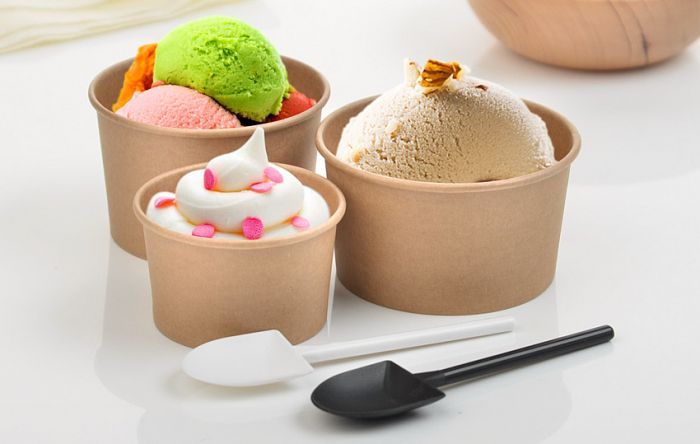
Moreover, cardboard boxes provide excellent opportunities for branding and product information display.
The exterior surface can be printed with eye-catching designs, logos, nutritional facts, and more, enhancing product visibility on store shelves.
From a practical standpoint, cardboard boxes are sturdy and offer good protection for the ice cream inside.
They also provide excellent insulation, helping to keep the ice cream cold and maintaining its texture for longer.
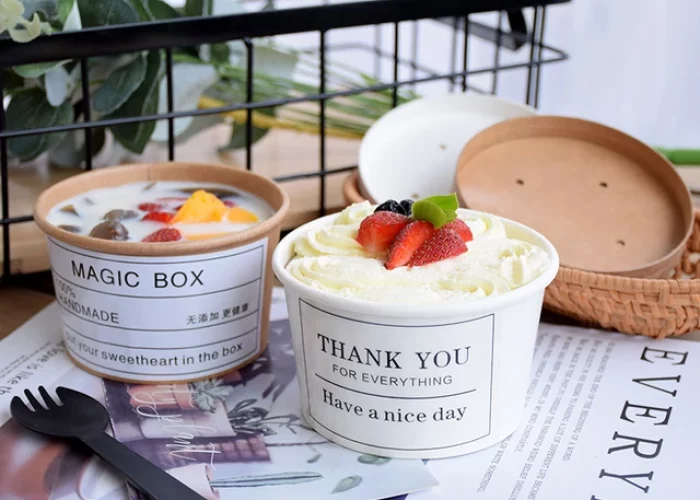
A notable example is the Swedish ice cream brand SIA Glass, which uses paper-based ice cream packaging made from 100% certified sustainable forestry sources, emphasizing its commitment to quality and environmental responsibility.
With environmental sustainability, branding opportunities, and practical benefits, cardboard or paper box packaging is ideal for ice cream products.
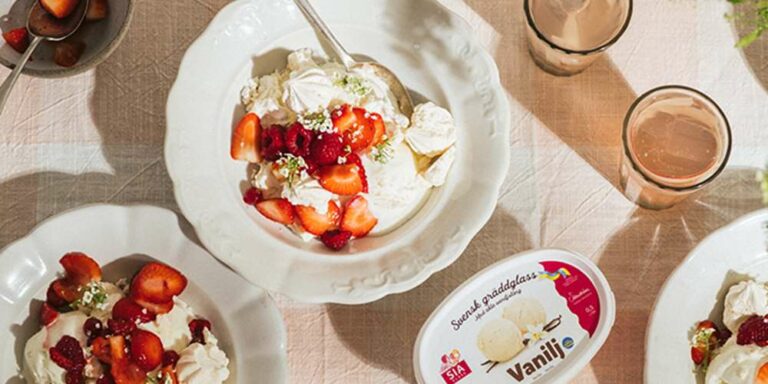
Ice Cream Tubs
Ice cream tubs are a classic packaging solution for various types of ice cream – from rich, creamy gelato to light, refreshing sorbet.
One of their main appeals lies in their simple, practical design.
Easy to use and store, ice cream tubs provide a wide opening for easy scooping and a sturdy structure to protect the product during transport and storage.
This feature is essential in maintaining the product’s quality and integrity.
Moreover, the outer surface of these tubs serves as a creative canvas for product branding and consumer information, making them a powerful marketing tool in the frozen dessert aisle.
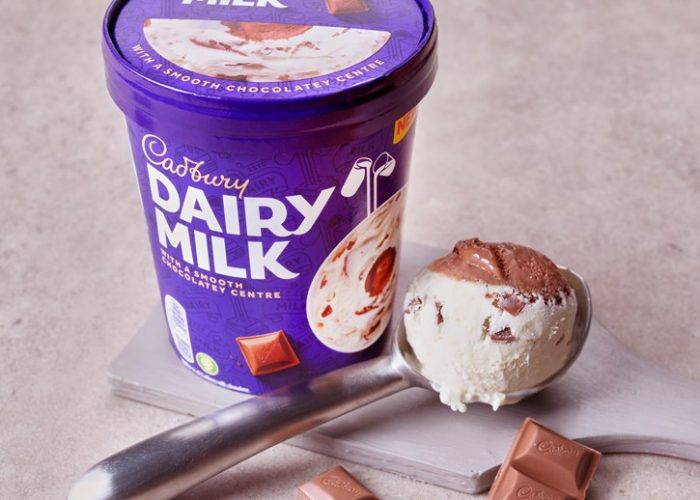
In recent years, ice cream brands have shown a promising commitment to sustainability in their packaging choices.
A notable example is Magnum, a Unilever brand, which in 2020 announced its decision to start using recycled plastic for its ice cream tubs.
This move made Magnum the first ice cream brand to use recycled polypropylene plastic for packaging on a global scale.
Moreover, packaging sustainability supports environmental conservation and caters to growing consumer demand for eco-friendly practices.
The cups & tubs segment held the largest revenue share of over 73.0% in 2021 and is projected to register a CAGR of 4.0% during the forecast period, according to a report by Grand View Research.
The growing preference for ice cream as a daily post-meal dessert is expected to drive this trend further.
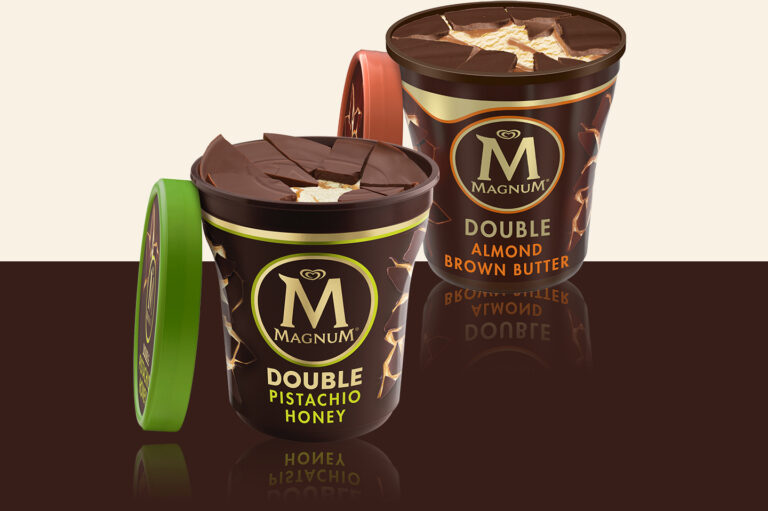
Brands are well aware of the popularity of tubs and have expanded their product offerings accordingly.
For instance, in August 2020, Magnum grew its variety of tubs in the U.K.
In summary, ice cream tubs balance user-friendly design, marketing opportunity, and sustainability potential, making them a favorable packaging choice in the ice cream industry.
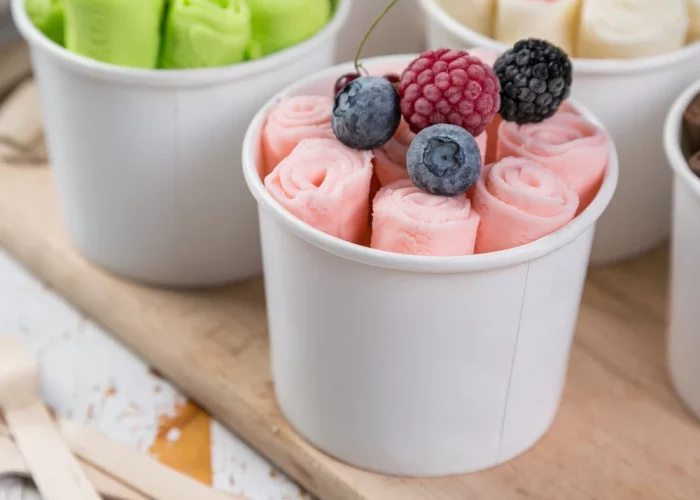
Ice Cream Cups
In the sphere of ice cream packaging, cups hold a significant place.
They serve as a convenient and familiar method of packaging and consuming an array of frozen treats.
Ice cream cups cater to diverse consumer needs, from simple scoops to elaborate sundaes.
One of the primary advantages of ice cream cups is their portability.
Easy to hold and consume, they are a popular choice at events, festivals, or on-the-go snacking.
They are also a standard feature in restaurants, often used to serve single ice cream or gelato servings.
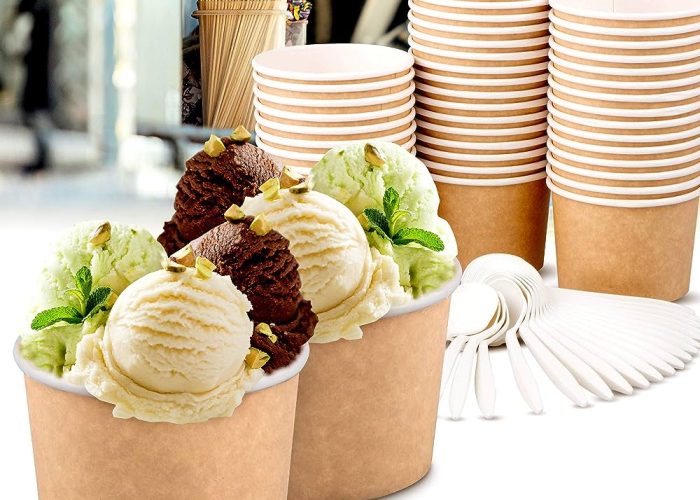
Ice cream cups also allow room for creativity regarding branding and design.
Vibrant colors, engaging designs, and essential product information can be printed on the exterior, attracting the consumer’s attention and enhancing brand recognition.
Moreover, sustainability is becoming a focal point in the development of ice cream cups.
More and more companies opt for eco-friendly materials, like biodegradable paper or compostable plant-based plastics.
For example, the UK-based company Frugal Pac has created a fully recyclable ice cream cup from recycled paper.
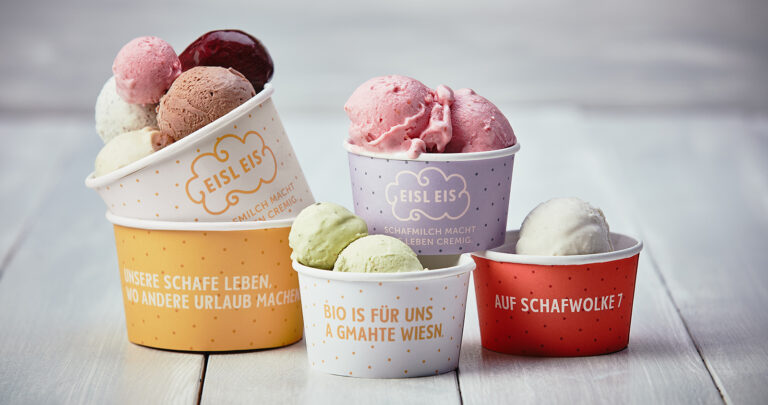
As for market trends, the global ice cream market size is expected to reach $101.4 billion by 2030, according to a report from Vantage Market Research.
A significant portion of this growth can be attributed to ice cream cups’ continued use and innovation.
With their convenience, branding potential, and increasing focus on sustainability, ice cream cups remain a mainstay in the ice cream packaging landscape.
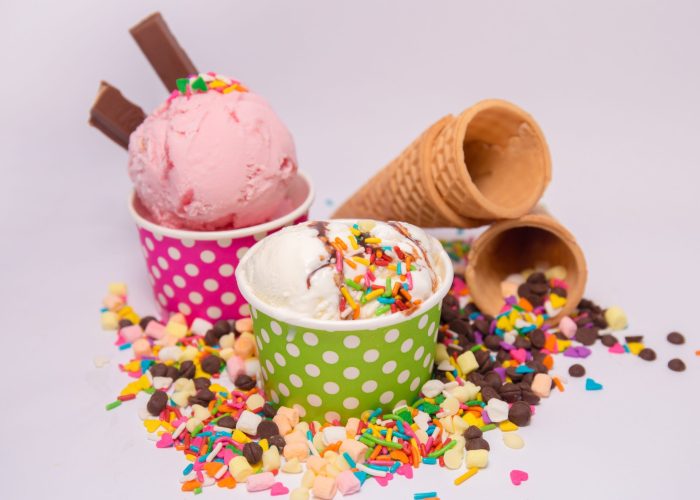
Ice Cream Cones
Ice cream cones are not just a packaging solution but an integral part of the ice cream eating experience.
This classic, edible packaging has been around since the early 1900s, turning the consumption of ice cream into a hands-on, nostalgic experience.
But why are cones so beloved?
Firstly, they bring the unique advantage of being edible.
This enhances the overall sensory experience and eliminates waste generation after consumption, a win for sustainability.
Ice cream cones come in various flavors and types, including wafer cones, sugar cones, and waffle cones, each offering a different texture and taste profile to complement the ice cream.
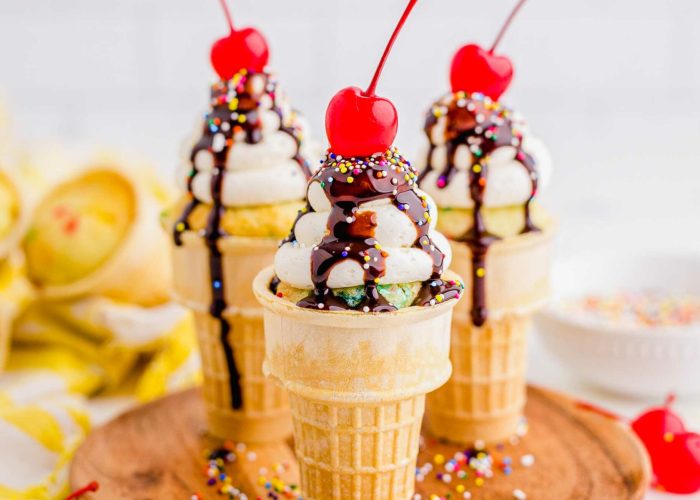
Moreover, cones are inherently portable and convenient for on-the-go consumption.
They are designed to be easily held and do not require additional utensils, making them ideal for street fairs, beach trips, and park outings.
There’s also room for innovation within the cone space.
For example, companies like Joy Cone Co. have introduced gluten-free ice cream cones, broadening their appeal to those with dietary restrictions.
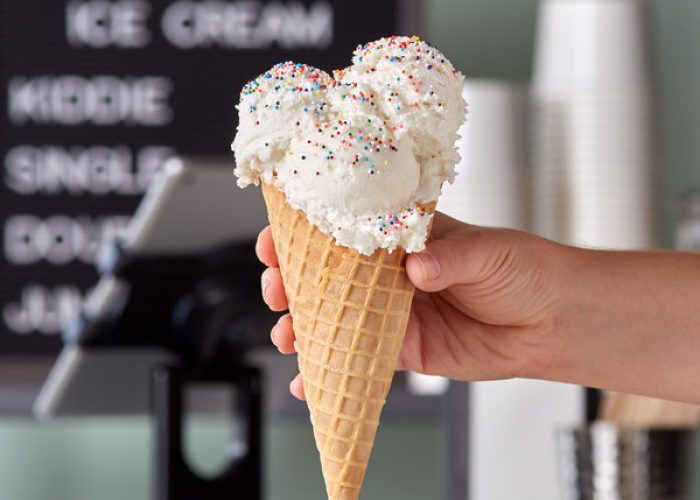
In the commercial landscape, ice cream cones present a promising growth avenue.
The global ice cream cones market is expected to generate a revenue of USD XXX.X million by 2030, up from an estimated USD 872.2 million in 2019, growing at a CAGR of 11.1% during the forecast period (2019-2030).
To sum up, with their unique taste, convenience, and zero-waste feature, ice cream cones continue to be a cherished part of the ice cream world, both as a packaging solution and an integral part of the experience.
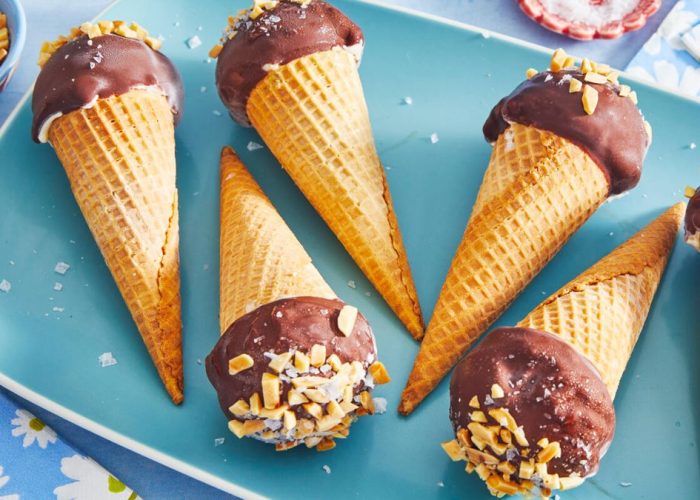
Popsicle Packaging
Popsicles, or ice pops, represent another staple of the frozen dessert world.
The packaging for these icy treats has been traditionally designed for convenience, hygiene, and product preservation.
But as we move into 2023, a year marked by environmental consciousness, the industry looks at sustainable options.
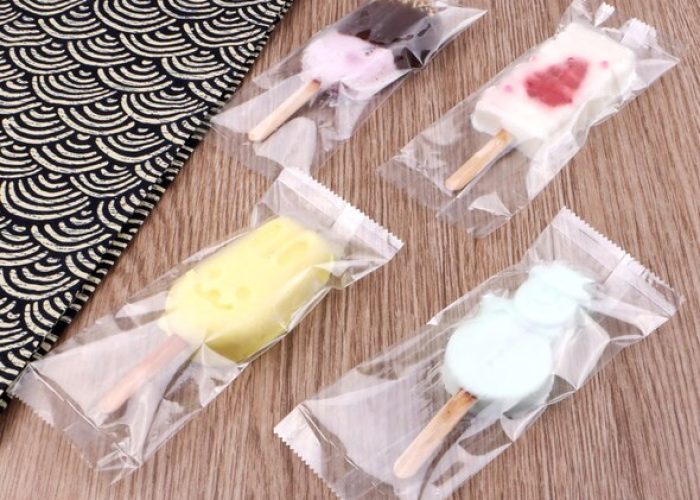
Why consider popsicle packaging?
Popsicle packaging, typically made of plastic or paper, is designed to be easy to open and waterproof.
It should protect the product during transport, storage, and until consumption, ensuring the treat remains clean and hygienic.
Recently, innovative and eco-friendly approaches to popsicle packaging have been taking the stage.
For example, companies like Chloe’s Fruit use sustainable packaging made of paperboard.
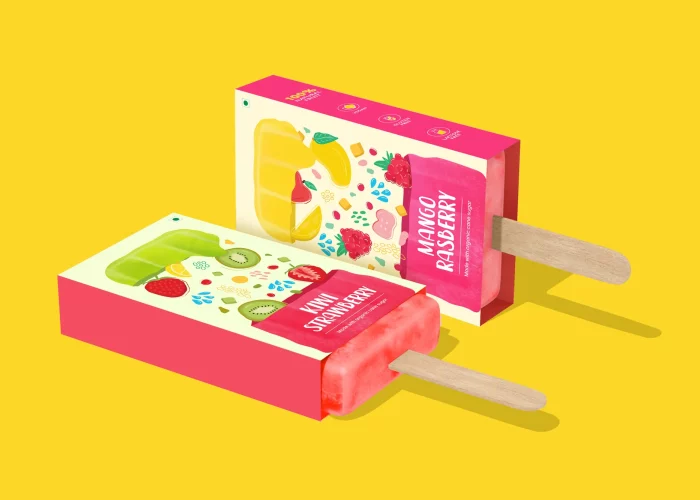
As for market trends, the global Popsicle market size is expected to reach USD million by 2030, from USD million in 2020, at a CAGR during 2021-2030.
This growth is driven by the increasing demand for frozen desserts and the rising consciousness toward sustainable packaging.
Overall, popsicle packaging, though often overlooked, carries the potential for substantial impact.
By making conscious choices regarding the materials we use, we can contribute to sustainability while enjoying our favorite frozen treats.
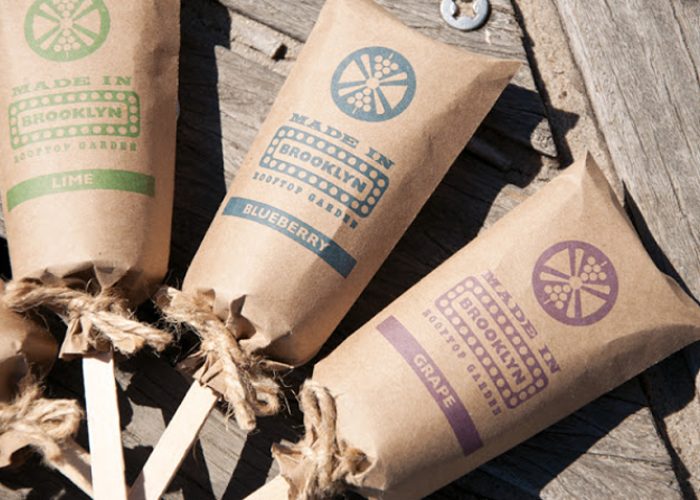
Ice Cream Bars and Sandwiches Packaging
Ice cream bars and sandwiches offer a portable and mess-free way to enjoy the much-loved dessert.
Their packaging is critical in ensuring that these treats are made from the production line to the consumer’s hand in perfect condition, even more so in 2023 when environmental considerations are paramount.
So why focus on the packaging of ice cream bars and sandwiches?
The primary purpose of their packaging is to maintain product integrity during transport and storage.
It also plays a significant role in preserving the ice cream treat’s quality, freshness, and flavor.
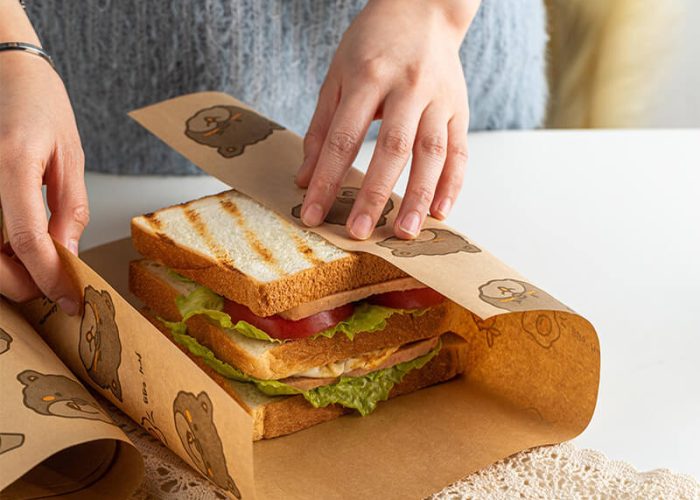
Consider the brand Klondike.
They utilize a patented, foil-lined wrapper that ensures their ice cream bars stay fresh and tasty.
This packaging is not only functional but also serves a branding purpose, as the shiny silver packaging is synonymous with the Klondike brand.
But what about sustainability?
Nestlé, for instance, committed to making 100% of its packaging recyclable or reusable by 2025.
The company has been exploring more sustainable packaging solutions for its ice cream bars and sandwiches as part of this initiative.
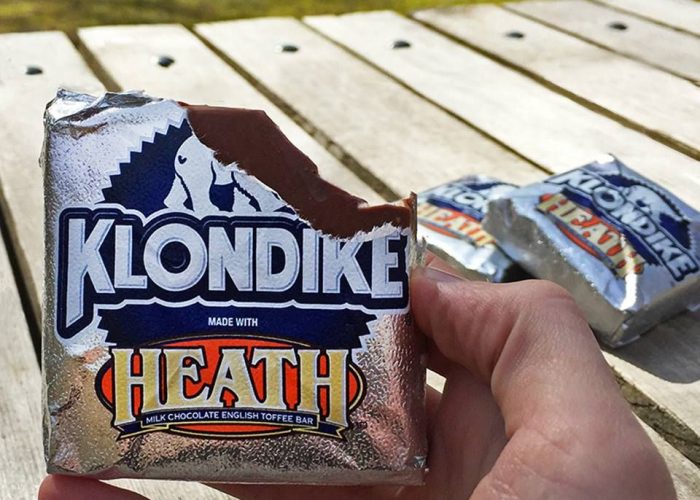
Moreover, the global ice cream market, including bars and sandwiches, is projected to reach $119.21 billion by 2030, according to SkyQuest Technology.
Hence, the environmental impact of this sector’s packaging is not to be underestimated.
To conclude, the packaging of ice cream bars and sandwiches presents an opportunity for manufacturers to innovate, protect product quality, and contribute towards sustainability.
Every ice cream wrapper counts in a world increasingly aware of environmental issues.
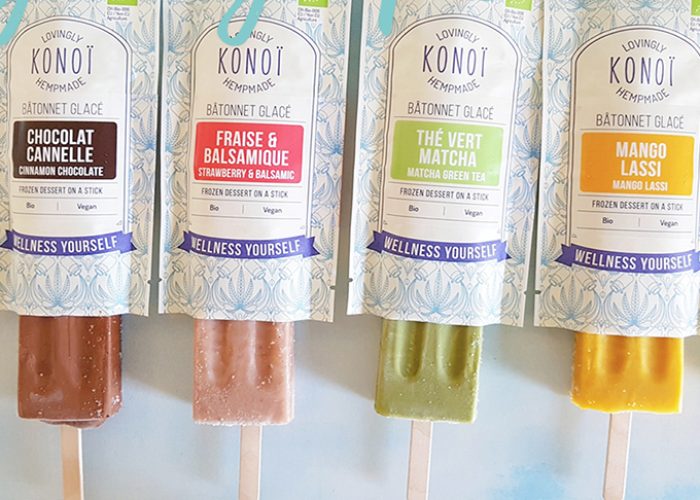
Eco-friendly Ice Cream Packaging
In a world growing ever-conscious of its environmental footprint, switching to eco-friendly ice cream packaging has never been more relevant or urgent.
As we navigate through 2023, let’s explore the compelling reasons why we must pay heed to this packaging evolution.
So, why is eco-friendly ice cream packaging important?
Primarily, it minimizes environmental impact by reducing waste and resource consumption.
Eco-friendly packaging often uses biodegradable, compostable, or recyclable materials, drastically cutting down the waste that ends up in our landfills or oceans.
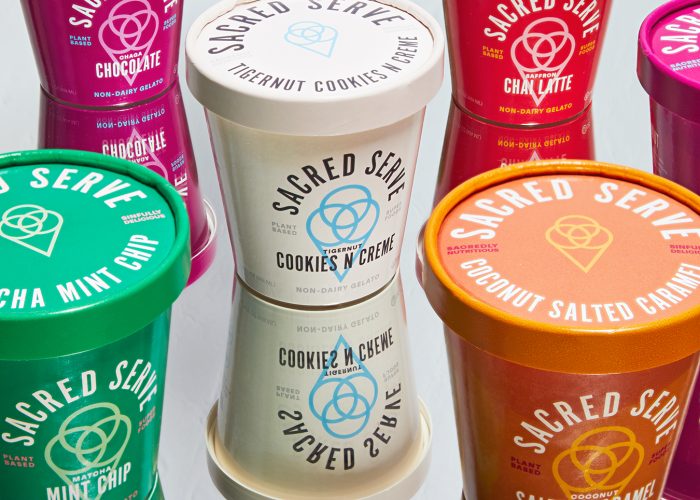
For instance, Unilever, the world’s largest ice cream company, is committed to making all of its plastic packaging fully reusable, recyclable, or compostable by 2025.
This bold commitment illustrates the global shift towards sustainable packaging.
Innovative start-ups are also emerging in this space.
An excellent example is BIOPAK, which produces a line of sugarcane-based, compostable ice cream tubs.
These tubs break down in a composting environment within 90 days, leaving no toxic residues behind.
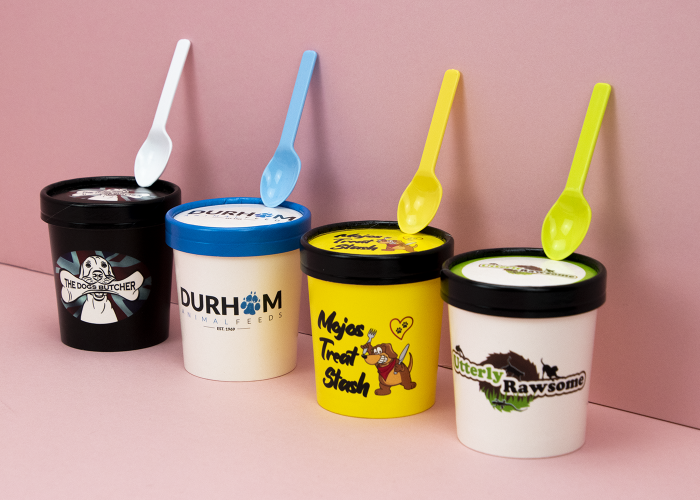
Moreover, according to a report by Insight Ace Analytic, the global eco-friendly food packaging market is expected to reach $425.25 billion by 2031, indicating a promising future for sustainable packaging solutions.
Overall, eco-friendly ice cream packaging is not just a passing trend; it’s an essential step toward a sustainable future.
As consumers, it’s up to us to support companies that take environmental stewardship seriously.
After all, enjoying our favorite frozen treats shouldn’t come at the expense of our planet.
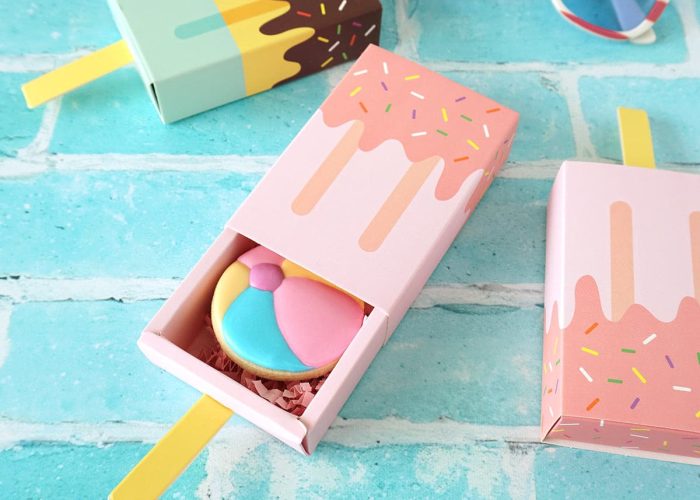
Clear and Transparent Ice Cream Packaging
Welcome to 2023, where clear and transparent ice cream packaging is a game changer in the frozen desserts industry.
Let’s delve into why this particular type of packaging is gaining such broad appeal.
Firstly, why should we consider clear and transparent packaging?
Transparency in packaging, literally and figuratively, plays a significant role in consumer trust.
It lets customers see exactly what they buy, ensuring product quality and condition.
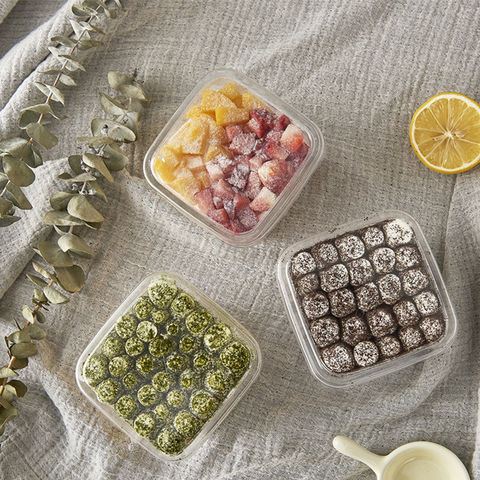
In addition, it offers brands the opportunity to showcase the actual product instead of relying solely on packaging art.
It adds an aesthetic appeal, especially when ice cream is filled with natural fruits, chunks of chocolate, or other visually appealing mix-ins.
For example, Talenti, a well-known ice cream brand, uses clear, recyclable jars to package gelato.
The transparency showcases the product’s quality and allows customers to reuse the packaging, promoting sustainability.
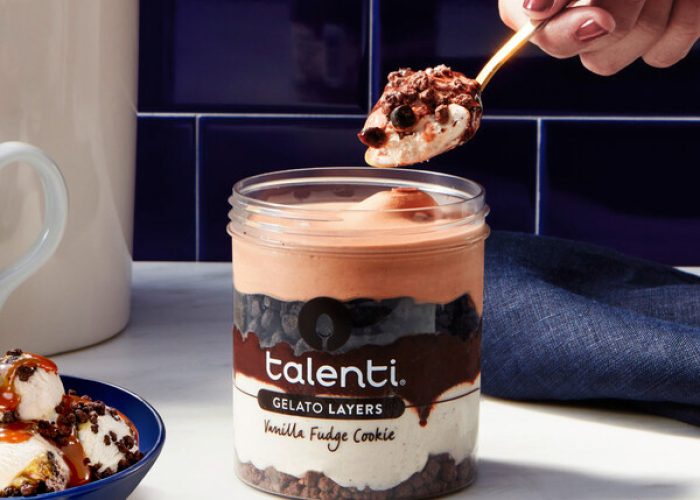
Additionally, according to a study by the Paper and Packaging Board and IPSOS, 72% of consumers agree that packaging design can influence their purchase decision.
In this sense, clear packaging can be a powerful marketing tool.
The clear and transparent packaging trend aligns perfectly with food manufacturers’ growing demand for honesty and transparency.
As this continues to shape consumer expectations, we can expect to see more and more brands embracing this trend.
In conclusion, clear and transparent ice cream packaging, while a simple concept, has far-reaching impacts on consumer trust, brand image, and marketability.
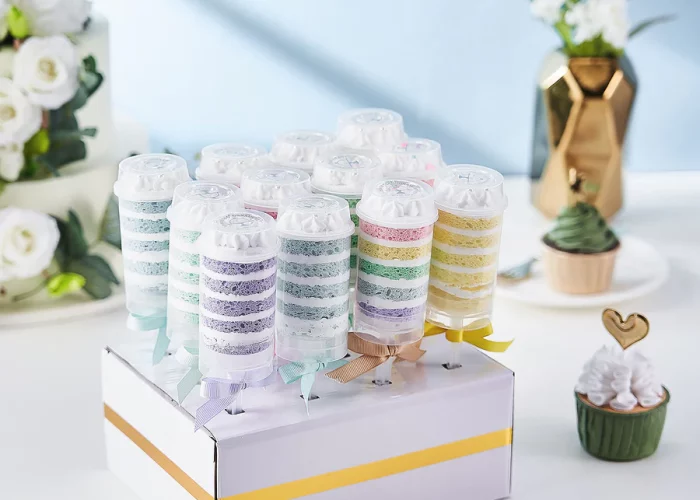
Novelty Ice Cream Packaging
Next up on our tour of ice cream packaging in 2023 is novelty packaging – an innovative and creative solution that is shaking up the frozen dessert market.
Why are we talking about novelty packaging?
Novelty packaging takes us beyond the primary function of product protection and preservation.
It adds a fun, unique, and memorable aspect to the product, enhancing the overall consumer experience.
This, in turn, can set a brand apart in the fiercely competitive ice cream market.
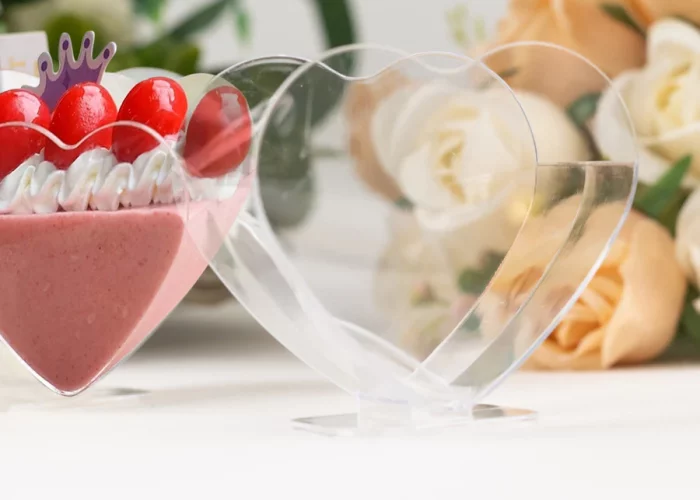
For instance, imagine a package shaped like an ice cream cone or a chocolate bar for ice cream bars.
Or picture a unicorn-shaped container for a rainbow sherbet. Such unique packaging creates intrigue and will likely grab customer attention on the store shelves.
An excellent example of this is the Magnum ice cream brand.
hey introduced a resealable tab on their packaging to ensure product freshness.
The sleek and sophisticated design makes it stand out on the shelf, adding to its premium appeal.

Furthermore, according to a survey by Dotcom Distribution, 40% of consumers would likely make repeat purchases from an online merchant with premium packaging.
This indicates the impact that innovative packaging can have on customer retention and brand loyalty.
However, it’s essential to note that while novelty packaging is often visually appealing, it must also meet practical considerations such as sustainability, cost, material safety, and ease of use.
Novelty ice cream packaging, when done right, can create a memorable unboxing experience that resonates with consumers, encourages repeat purchases, and enhances brand recognition.
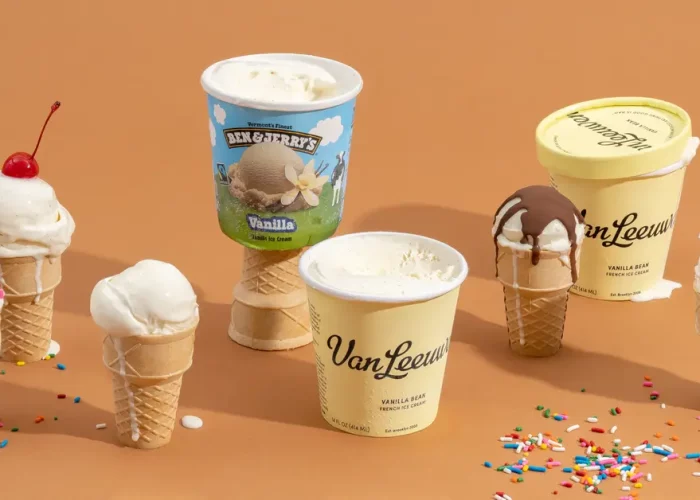
Conclusion
It’s clear that packaging plays a pivotal role in preserving and protecting the product and creating a memorable customer experience, reflecting brand values, and driving sustainability.
Did this guide help you better understand the wide world of ice cream packaging?
Feel free to share your thoughts in the comments below.
Remember, every choice we make, even when buying ice cream, can contribute to a more sustainable future. So, let’s choose wisely!

One Response
All plastic packaging needs to be eliminated. We have to say enough already. It’s damaging to the enviroment, sea life, birds, animals and humans.